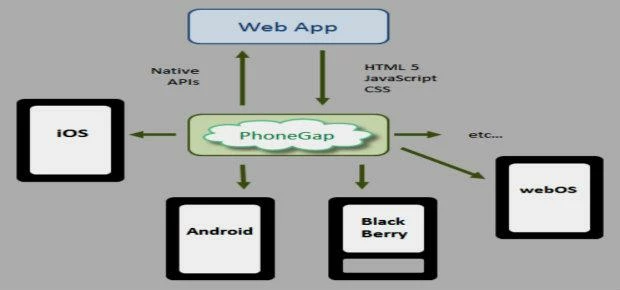
Partner Article
Scope of Phone Gap for Mobile App Developers
Introduction
PhoneGap is an open source framework that is widely used for developing cross-platform mobile applications. Now that mobile is leading the future of the internet, nearly everything is going mobile. This has led to the prominence of tools such as PhoneGap for creative and rich apps. Looking at the scenario presently, the scope for PhoneGap looks bright for mobile app developers.
The makers behind PhoneGap
As a mobile development framework, PhoneGap was initially produced by Nitobi. However, Adobe Systems purchased Nitobi in 2011. The mobile development framework allows software programmers to build applications for networks using JavaScript, HTML5, and CSS3, instead of relying on platform-specific APIs such as those in iOS, Windows Phone, and Android. It also enables wrapping of HTML, CSS and JavaScript depending upon the device platform. The software that underlies PhoneGap is called Apache Cordova. Previously, the software was called by different names such as PhoneGap and then Apache Callback. Now, with Apache Cordova, it is also possible to include non-Adobe wrappers around it. These include Intel XDK or Appery.io
What does PhoneGap Offer?
It can be said that PhoneGap is one of the best tools for creating codebase that can be compatible with multiple devices. It must be understood that the normal PhoneGap applications are unlike the normal mobile websites. With PhoneGap, you can build and develop native-type applications. It is not necessary to use the specific mobile platform for creating connected mobile apps.
With the help of an application interface, the PhoneGap SDK is capable of provide the developer with specific range of mobile features. PhoneGap supports specific hardware features such as geo-location features, accelerometer features, and sound enhancements.
It is necessary for the Phone Gap SDK to be installed for specific mobile platforms, which is necessary for app creation. For example, if an android app is necessary, this will mandate the Android SDK and the Android NDK to be installed. Hence, PhoneGap can be taken on its face value as a cross platform mobile network. This is because of the emergence of many major mobile operating systems in the industry. Hence, one can say with confidence that no mobile platform shares a common native development tool.
PhoneGap applications make use of web technology. With this technology, it is also possible to develop hybrid applications that can be developed using native functionalities, including technologies that use rich UI. As it supports cross platform application development, it allows extensive reusability of code. Additionally, many features such as accelerometer, camera, media, network, contacts compass, files, geo-location, and other such features are also supported. Also, plug-ins can also be used to integrate mobile native feature with the web. Based on the app requirement, an appropriate plug-in can be developed and can be utilized with PhoneGap.
Concluding Thoughts
The result is that the applications developed are hybrid, which means that they are neither truly native mobile applications nor purely web based. This means they are hybrid, as all the layout rendering is done via the web views rather than the UI framework of the platform and also because, at the same time, they are not just web apps, but packages as apps for distribution and even has access to native device APIs.
With version 1.9 onwards, native as well as hybrid code snippets can be freely mixed. Nevertheless, the use of web technology with applications that are made with PhoneGap actually makes it run slower that native applications with similar functionality. On the flipside, according to Adobe Systems, Apple may reject applications built using Phone Gap due to being too slow or not feeling “native” enough.
This was posted in Bdaily's Members' News section by Ella Bell .








 Why investors are still backing the North East
Why investors are still backing the North East
 Time to stop risking Britain’s family businesses
Time to stop risking Britain’s family businesses
 A year of growth, collaboration and impact
A year of growth, collaboration and impact
 2000 reasons for North East business positivity
2000 reasons for North East business positivity
 How to make your growth strategy deliver in 2026
How to make your growth strategy deliver in 2026
 Powering a new wave of regional screen indies
Powering a new wave of regional screen indies
 A new year and a new outlook for property scene
A new year and a new outlook for property scene
 Zero per cent - but maximum brand exposure
Zero per cent - but maximum brand exposure
 We don’t talk about money stress enough
We don’t talk about money stress enough
 A year of resilience, growth and collaboration
A year of resilience, growth and collaboration
 Apprenticeships: Lower standards risk safety
Apprenticeships: Lower standards risk safety
 Keeping it reel: Creating video in an authenticity era
Keeping it reel: Creating video in an authenticity era